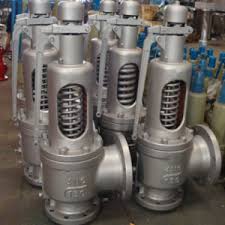In recent years, the demand for open storage real estate has grown significantly across the UK, reshaping how businesses and individuals manage space. This shift is not just a trend but a necessary evolution in the property and logistics landscape. With increasing urban congestion and changing commercial needs, open storage offers a versatile, cost-effective solution that bridges the gap between traditional warehousing and short-term land use.
From logistics companies and construction firms to retailers and event planners, open storage is now a critical asset. Whether you’re storing vehicles, containers, heavy equipment, or temporary structures, these outdoor storage yards provide unmatched flexibility and scalability that fixed buildings can’t offer.
What Is Open Storage Real Estate?
Open storage real estate refers to outdoor land or yard space designated specifically for storing materials, vehicles, equipment, and other non-perishable assets. Unlike indoor warehouses, open storage sites are usually undeveloped or lightly developed, with basic amenities such as perimeter fencing, secure access, lighting, and occasionally, hard-standing surfaces like concrete or gravel.
This type of real estate is particularly attractive for businesses looking to avoid long-term commitments, reduce capital expenditure, or handle seasonal or temporary surges in storage needs.
Key Industries Benefiting from Open Storage
- Construction and Infrastructure
Construction firms often need to store machinery, raw materials, and waste management containers. Open yards provide convenient access for large vehicles and equipment, and proximity to job sites cuts transportation time and costs. - Transport and Logistics
The logistics sector, especially last-mile delivery companies, uses open storage for parking fleets, shipping containers, and cargo trailers. These yards often serve as satellite hubs that support regional operations. - Retail and Wholesale
Large retailers, garden centers, and wholesalers benefit from open yards for storing bulk inventory, such as pallets, seasonal items, and overflow stock that doesn’t require indoor climate control. - Film, TV, and Events
Production companies and event organizers need temporary storage for props, sets, stages, and equipment. The ability to rent open storage for short durations makes it ideal for the fast-paced entertainment and events industry. - Recycling and Waste Management
These companies need open spaces for temporary holding of recyclable materials, skips, or industrial containers. The flexibility of open storage real estate ensures smooth operations even during collection peaks.
Benefits of Open Storage Real Estate
1. Affordability
Compared to traditional warehousing, open storage is significantly cheaper. Lower property prices, fewer infrastructure requirements, and minimal maintenance costs make it ideal for cost-conscious businesses.
2. Flexibility in Use
Open storage yards can be adapted to various business models. Whether it’s a construction firm storing heavy machinery or a logistics company parking vehicles, the open space can be tailored to meet specific needs.
3. Short-Term Leasing Options
Unlike traditional commercial properties that require long leases, open storage spaces often come with more flexible terms. This is perfect for businesses with seasonal demand or project-based operations.
4. Fast Setup and Exit
With minimal setup required, businesses can occupy and begin using open storage yards almost immediately. And when the space is no longer needed, exit processes are typically faster and less complicated.
5. Scalability
As your business grows, it’s easier to scale operations on open land than in fixed buildings. Some providers offer the option to expand or reduce space according to your changing requirements.
Choosing the Right Open Storage Yard
When selecting an open storage site, several key factors should be considered:
- Location: Proximity to your business, customers, suppliers, or transport hubs is vital. Access to major roads and highways is a bonus.
- Security: Look for sites with secure fencing, CCTV, 24/7 access control, and lighting to keep assets safe.
- Ground Surface: Depending on what you’re storing, gravel, concrete, or tarmac may be necessary for stability and weather resistance.
- Planning Permissions: Some uses may require specific permits or planning permission. Working with providers who understand these regulations can save time and hassle.
- Utility Access: For certain operations, having access to electricity, water, or drainage may be necessary.
Urban vs. Rural Open Storage
Both urban and rural storage sites offer distinct advantages. Urban locations are generally closer to clients and suppliers, reducing logistics costs. However, they may come at a premium price. Rural sites, on the other hand, are more affordable and can offer larger spaces, ideal for heavy-duty or long-term storage.
Depending on the intended use and available budget, businesses must strike a balance between location, cost, and access.
Environmental and Legal Considerations
Operating an open storage yard comes with environmental responsibilities. Proper drainage, waste handling, and noise control are just some of the factors that need to comply with local regulations. Working with experienced land providers ensures that your business remains compliant and environmentally responsible.
Additionally, it’s crucial to check for appropriate land use zoning and legal constraints. Some areas may restrict what can be stored or impose noise and access limitations.
The Role of Technology in Open Storage
Modern open storage facilities are incorporating technology to improve customer experience and asset protection. Features like digital access control, automated bookings, real-time inventory tracking, and smart surveillance systems are becoming common.
This digital integration helps streamline operations, improve security, and offer greater transparency, making open storage a viable long-term asset for businesses.
Finding Open Storage Real Estate Easily
Traditionally, finding suitable open storage has been time-consuming, often relying on local knowledge or informal networks. However, new platforms now simplify the process, offering curated listings with detailed information, images, pricing, and availability.
These platforms allow businesses to compare multiple properties, filter based on their needs, and book quickly—saving time and avoiding lengthy property searches.
Future of Open Storage Real Estate in the UK
With rapid changes in e-commerce, construction, and urban development, the demand for flexible land use will only grow. The UK’s push for infrastructure development and renewable energy projects also requires temporary yet reliable storage solutions, fueling this market further.
Moreover, as businesses move away from rigid long-term leases, open storage offers a responsive solution that aligns with modern commercial needs. In both urban centers and rural outskirts, open yards are becoming an essential piece of the real estate puzzle.
Conclusion
As businesses across the UK seek adaptable, affordable, and scalable storage solutions, open storage real estate emerges as a smart and strategic choice. It caters to a wide range of industries, provides operational flexibility, and supports growth without the financial strain of traditional commercial property.
For those looking to secure the right open storage space with ease and confidence, getYards is a trusted name in the field. Their platform simplifies the entire process—from discovery to booking—making open storage a seamless part of your business operations.
- The Rise of Open Storage Real Estate in the UK: A Practical Solution for Modern Business Needs
- Across the UK, demand is increasing for open storage real estate, a practical and efficient solution for businesses that require flexible outdoor space
- Open Storage Real Estate in the UK
Related posts:
 Top Carrier Oil Suppliers in India for Bulk & Wholesale Buyers
Top Carrier Oil Suppliers in India for Bulk & Wholesale Buyers
 Atlas Pro ONTV : La Révolution de la Télévision par Internet
Atlas Pro ONTV : La Révolution de la Télévision par Internet
 Luxury or Budget? Finding the Right Heathrow Transfer for You
Luxury or Budget? Finding the Right Heathrow Transfer for You
 What Is Cold Rolled Stainless Steel Coil and Why Does It Matter?
What Is Cold Rolled Stainless Steel Coil and Why Does It Matter?
 Make Impact with Commercial Signs Raleigh NC: A Strategic Guide to Business Success
Make Impact with Commercial Signs Raleigh NC: A Strategic Guide to Business Success
 PEX vs Copper in New Homes: What’s Right for You? | Creative Repipe
PEX vs Copper in New Homes: What’s Right for You? | Creative Repipe
 Top Benefits of Professional Roller Shutter Repair in London
Top Benefits of Professional Roller Shutter Repair in London
 Make Your Message Stick: The Power of Flyers & Posters in Plano!
Make Your Message Stick: The Power of Flyers & Posters in Plano!






